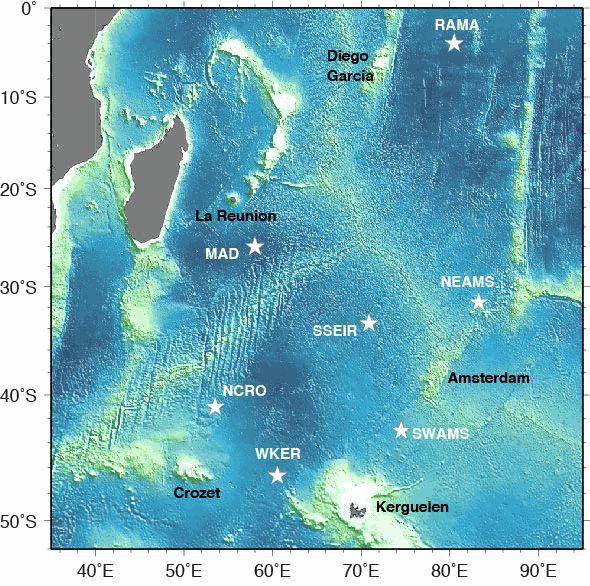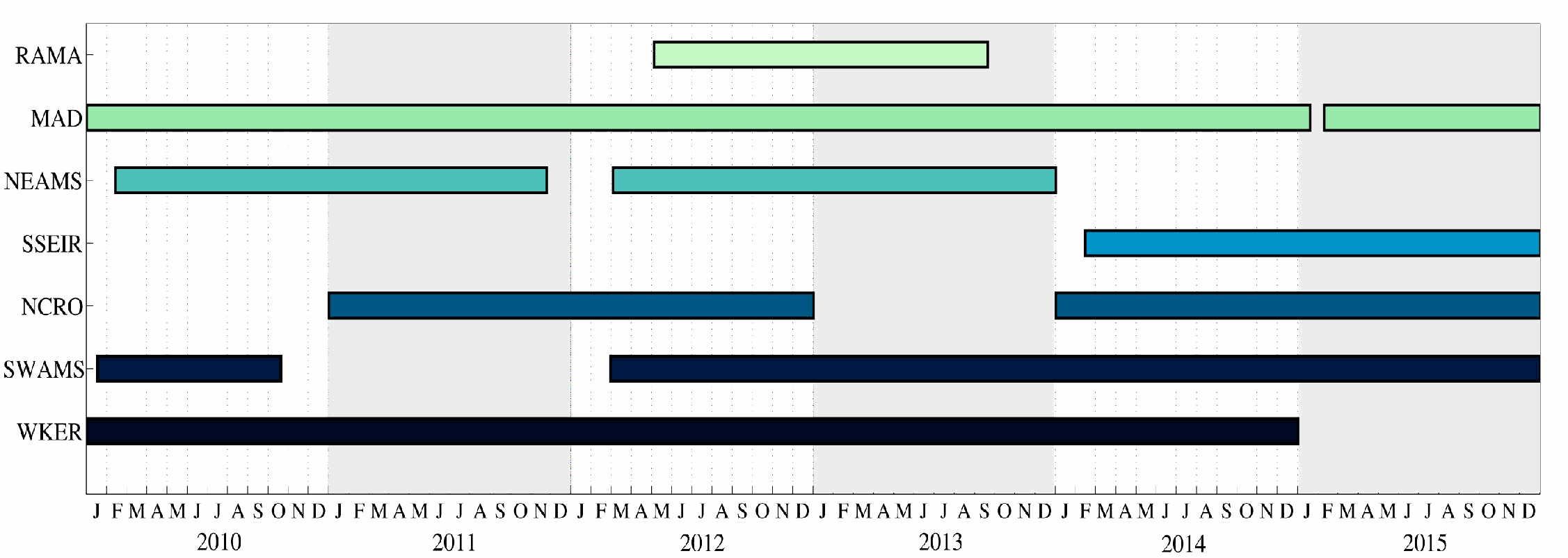Copy this text
Antarctic blue whales in the southern Indian Ocean: a multi-year and multi-site database of Z-call detections
As part of the OHASISBIO project, since January 2010, a network of 6 to 8 autonomous hydrophones is deployed in the southern Indian Ocean (Fig. 1) to monitor the low-frequency sounds (0-120 Hz) carried by the ocean. These acoustic data provide unique information on the seasonal presence of several species and sub-species of large baleen whales. Among them, the Antarctic blue whale (Balaenoptera musculus intermedia) has a distinct call between 18 and 26 Hz, easily recognizable by its Z-shape in a time-frequency diagram. We designed an automatic Z-detector (Socheleau et al., 2015) to cense the Z-calls in our multi-year, multi-site acoustic dataset. The resulting database consists of several metrics: time of detection of each individual call, the ambient noise level between 40 and 60 Hz, and the ratio between the whale chorus between 25 and 27 Hz over the noise level between 30 and 33 Hz.
The rationale for these metrics and the interpretation of the results can be found in the paper by Leroy et al. (2016; see reference below).

Figure 1: Acoustic records available for Antarctic blue whale Z-call detections.
© E Leroy / CNRS-U.Brest LGO

Figure 2: Acoustic records available for Antarctic blue whale Z-call detections.
© E Leroy / CNRS-U.Brest LGO
Disciplines
Environment
Location
-4N, -46S, 83E, 50W
Data
| File | Size | Format | Processing | Access | |
|---|---|---|---|---|---|
45826.zip | 12 Mo | CSV | Quality controlled data |

